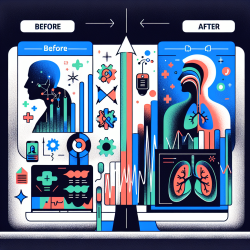Introduction
In the evolving landscape of prenatal care, non-invasive prenatal testing (NIPT) stands out as a beacon of innovation. This technology offers a safer, more accurate alternative to traditional prenatal screening methods for common autosomal aneuploidies. The research article "Non-invasive prenatal testing for aneuploidy and beyond: challenges of responsible innovation in prenatal screening" provides a comprehensive overview of NIPT's potential and the ethical considerations that accompany its implementation. As practitioners, understanding these insights is crucial for enhancing patient care and making informed decisions.
Understanding NIPT and Its Benefits
NIPT utilizes cell-free DNA from maternal plasma to screen for chromosomal abnormalities such as Down syndrome (trisomy 21), trisomy 18, and trisomy 13. With a sensitivity of 99% for trisomy 21 and a specificity of 99.92%, NIPT significantly reduces the need for invasive procedures like amniocentesis, which carry a risk of miscarriage.
For practitioners, incorporating NIPT into prenatal care means offering patients a less invasive, highly accurate screening option. This not only enhances patient safety but also aligns with the ethical goal of facilitating autonomous reproductive choices.
Challenges and Ethical Considerations
Despite its benefits, NIPT presents challenges that require careful consideration. The potential for false positives, particularly in lower prevalence conditions like trisomy 13, necessitates confirmatory testing for positive results. Practitioners must be equipped to provide balanced pretest information and non-directive counseling to support informed decision-making.
Moreover, as NIPT technology advances, the scope of detectable conditions expands. This raises ethical questions about the responsible use of such information, especially regarding conditions with uncertain prognoses or those detected incidentally.
Implementing Responsible Innovation
To responsibly integrate NIPT into practice, practitioners should:
- Stay informed about the latest research and developments in NIPT technology.
- Engage in continuous education to improve counseling skills, ensuring patients receive comprehensive, unbiased information.
- Collaborate with genetic counselors and other healthcare professionals to provide holistic care.
- Advocate for equitable access to NIPT, ensuring all patients can benefit from this technology regardless of socioeconomic status.
Conclusion
As NIPT becomes more prevalent, practitioners have a pivotal role in shaping its implementation. By embracing data-driven insights and ethical considerations, healthcare providers can enhance prenatal care, empowering patients with knowledge and choice. For those interested in further exploring the research on NIPT, the original paper provides a wealth of information and can be accessed here: Non-invasive prenatal testing for aneuploidy and beyond: challenges of responsible innovation in prenatal screening.










